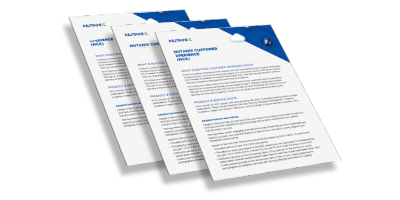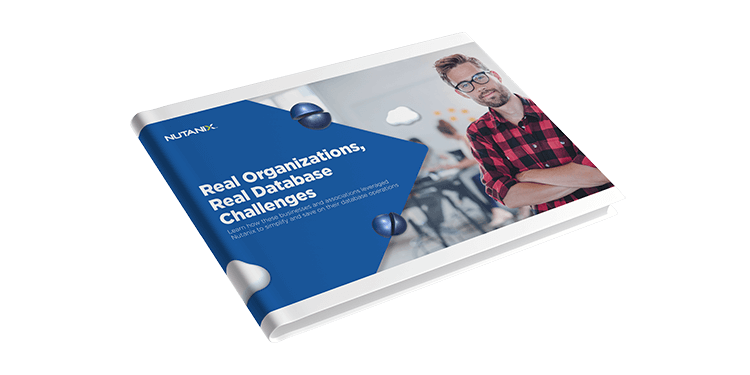Database-as-a-Service (DBaaS) is a software and/or services that allow users to set up, operate and scale databases without the need of setting up physical hardware, installing software or configuring for performance. All administrative tasks and maintenance are managed by the service provider so that all the user or application owner needs to do is use and access the database. Of course, the level of control can vary, depending on what the user prefers and that the service provider offers.
How does DBaaS work?
DBaaS is a service that is added to your databases that can streamline your day-to-day tasks. With automated one-click operations to simplify database management, DBaaS can eliminate tedious and time-consuming administrative tasks. It helps organizations accelerate business performance for DB admins to start their projects and run their workloads without delay.
Once you move your database to the cloud, you have the option to add software-as-a-service deployment. Doing so simplifies the processes required to make information available through internet-based connections. Storage consolidation can also be a benefit of moving a company's databases to the cloud. Databases in multiple departments of a large company, for example, can be combined in the cloud into a single hosted database management system.
What’s the difference between a DBaaS and a database management system?
Here are the key differences between DBaaS and a DBMS:
Service model - DBaaS is a cloud computing service model that provides database functionality as a service. It involves outsourcing the management and administration of the database to a cloud service provider. In contrast, a DBMS is a software that is installed and operated on local servers or systems.
Infrastructure management - In a DBaaS model, the service provider manages the underlying infrastructure, including hardware, networking, and storage, required to host and operate the database. With a DBMS, the organization or user is responsible for managing and maintaining the infrastructure on which the database system runs.
Scalability - DBaaS offers the advantage of scalability, allowing users to easily scale up or down the database resources as per their requirements. The service provider handles the provisioning of additional resources. In a traditional DBMS, scaling up or down the database typically requires manual intervention and infrastructure adjustments by the organization or user.
Administration and maintenance - With DBaaS, the service provider takes care of routine administrative tasks, such as database backups, software updates, security patches, and system maintenance. In a DBMS, the organization or user is responsible for performing these tasks.
Cost model - DBaaS follows a subscription-based or pay-as-you-go pricing model, where the user pays for the resources and services utilized. The cost usually includes the infrastructure, software licenses, and maintenance. In a DBMS, the organization typically purchases or licenses the software and manages the infrastructure, leading to upfront costs and ongoing maintenance expenses.
Flexibility and control - DBaaS offers a level of convenience by handling infrastructure management and administration tasks, allowing users to focus more on data and application development. However, it may have certain limitations and restrictions imposed by the service provider. In a DBMS, the organization has greater control and flexibility over the database system, including custom configurations, software versions, and infrastructure choices.
It's important to note that DBaaS can utilize a DBMS as its underlying technology. In such cases, the DBMS is the software component that powers the DBaaS offering, providing the database management and functionality as a service to the users.
What is DBaaS used for?
DBaaS provides a wide range of benefits and applications for businesses across various industries. Firstly, DBaaS is commonly used for application development and testing. It allows developers to quickly provision databases, reducing the time and effort required to set up and configure the infrastructure. This streamlines the development process and enables developers to focus on building and testing applications rather than managing the underlying database infrastructure. Additionally, DBaaS offers scalability, allowing organizations to easily scale up or down their database resources based on their application's needs.
Secondly, DBaaS is extensively used for data analytics and business intelligence purposes. With its ability to handle large volumes of data and perform complex queries, organizations can leverage DBaaS to store, process, and analyze data for generating valuable insights. The scalability and performance of DBaaS enable businesses to handle dynamic workloads and accommodate the growth of data. This is particularly beneficial for organizations that require advanced analytics capabilities, such as data warehousing, machine learning, and real-time analytics.
What are the benefits of DBaaS?
There are several compelling reasons to consider using DBaaS (Database-as-a-Service) for your organization. DBaaS simplifies database management, offers scalability, optimizes costs, provides high availability, and grants access to expert support. These advantages make DBaaS an attractive option for organizations seeking a reliable, scalable, and cost-effective database solution. Here are five key benefits:
- One-click management operations - DBaaS consolidates disparate and siloed databases under one roof for easier management. It eliminates tedious, time-consuming tasks like submitting tickets for new database requests and provides role-based access as a self-service capability, thereby saving a lot of time and helping accelerate time to value.
- Scale according to business needs - Get faster performance from databases to access key data stored for business insights when you need it. DBaaS can also provide the option to scale rapidly to meet fluctuating business demands like end-of-quarter reporting or for seasonal e-commerce companies that require high transactional processing on-demand but then scale back down after season without the overage costs.
- Safeguard your data - By utilizing a cloud-based infrastructure, security is often integrated and applied across the entire platform - including your database. No more siloed security practices that are applied piecemeal across compute, storage, networking, and virtualization environments which can cause gaps and inconsistency leading to vulnerability and attacks.
- Increase operational efficiency - Since DBaaS is a service, you can start small with one node at a time and scale bigger without disrupting the business. Organizations can scale as they grow which is far more cost-efficient; by adding one or more nodes at a time and then spinning down resources that are no longer needed, IT teams can prevent costly overages.
- Increase productivity - DBaaS offers one-click patching and upgrade options and automates the steps needed to perform these tasks. Intelligent database operations means that you no longer have to bring the system down to perform these tasks. Users can continue to work while the upgrades are happening thereby maintaining user and database productivity so you can focus on more business-enhancing tasks.
What is lacking in traditional DBaaS?
Compliance
The key to not only database health but an organization's health as a whole is database compliance and security. Identifying potential threats in the environment is key to protecting both customer and organization data. Data breaches are costly in that they damage the trust between their customers and the company and can hinder future business. Confirming the environment falls under regulatory compliance such as Sarbanes-Oxley, PCI, and HIPAA/HITECH is important so that auditing and reconciliation actions can be taken to remediate any mandatory regulation shortfalls.
Company Standards
Organizations discard their best practices because they are consuming a fully managed environment with traditional DBaaS. This one size fits all approach removes the customization that is required for most organizations to fit their business approach. DBaaS is typically hosted in the public cloud, which is a single vendor & single cloud model (i.e. cloud lock-in) which is not ideal for hybrid cloud scenarios.
How to choose a DBaaS?
Choosing the right DBaaS (Database as a Service) provider requires careful consideration of several factors. Here are some key steps to help you make an informed decision:
Define your requirements - Start by clearly understanding your organization's specific needs and requirements. Consider factors such as the expected data volume, performance requirements, scalability needs, security and compliance considerations, geographic availability, and budget constraints. This will serve as a foundation for evaluating DBaaS providers.
Evaluate service offerings - Research and compare the offerings of different DBaaS providers. Assess the range of database options available (e.g., relational, NoSQL), supported programming languages, scalability options, backup and recovery mechanisms, security features, monitoring and reporting capabilities, and integration with other cloud services. Ensure that the provider's offerings align with your requirements and future growth plans.
Reliability and performance - Evaluate the reliability and performance of the DBaaS provider's infrastructure. Look for guarantees of high availability, data durability, and minimal downtime. Check if they have robust disaster recovery mechanisms and backup procedures. Additionally, consider their track record and reputation for providing consistent and performant services.
Security and compliance - Ensure that the DBaaS provider offers robust security measures to protect your data. Evaluate their encryption options, authentication mechanisms, access control policies, and compliance certifications (e.g., GDPR, HIPAA). Consider any industry-specific requirements and regulations that your organization needs to comply with.
Scalability and flexibility - Assess the scalability options offered by the DBaaS provider. Determine if they can easily accommodate your organization's future growth in terms of data volume, concurrent users, and performance demands. Look for flexibility in terms of scaling resources up or down and the ability to handle varying workloads.
Support and SLAs - Evaluate the level of support and service level agreements (SLAs) provided by the DBaaS provider. Consider factors such as response times for support requests, availability of technical documentation, community forums or support channels, and the provider's commitment to resolving issues and maintaining service uptime.
Cost and pricing model - Analyze the pricing structure of the DBaaS offerings and ensure that it aligns with your budget and cost expectations. Understand the pricing factors, such as storage usage, data transfer, compute resources, and additional services. Consider the potential for cost optimization and flexibility in adjusting resources based on usage patterns.
Vendor lock-in - Assess the potential for vendor lock-in with the DBaaS provider. Consider factors such as the ease of migrating data to or from the provider's platform, availability of database export/import tools, compatibility with industry-standard APIs, and the ability to switch providers without significant disruptions.
Reviews and customer feedback - Research customer reviews and feedback to gauge the experiences of other organizations using the DBaaS provider's services. Consider factors such as customer satisfaction, quality of support, ease of use, and overall reliability. Feedback from existing customers can provide valuable insights into the provider's strengths and weaknesses.
Trial and proof of concept - Whenever possible, take advantage of trial periods or proof-of-concept opportunities offered by the DBaaS providers. This allows you to test their services, evaluate performance, and assess compatibility with your applications and workflows before committing to a long-term contract.
Explore our top resources

Nutanix Database Service: Database-as-a-Service Across On-Premises & Public Cloud

Take Nutanix Database Service for a Test Drive

Database-as-a-Service
Unified orchestration and automation of database management processes in hybrid and multicloud environments


